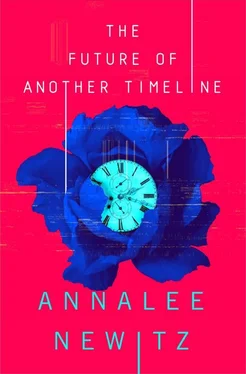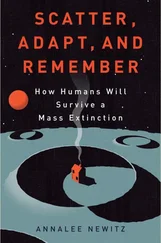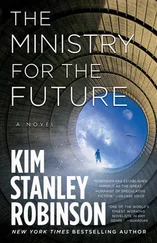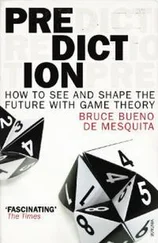…
We are starting from the present and are working our way backward. My first sample comes from 670. No unusual readings above or below standard levels.
…
I have had my first experience of unusual activity, 85 million years ago (mya). Exact dates noted in samples. I returned to the present wet, contaminated with diatoms from the early Ordovician period, 480 mya. That’s right—these are organisms from roughly 400 million years earlier than my travel destination in the Cretaceous. Photonic matter emissions fluctuated, dropping far below standard levels. I believe this is a sign of a weak connection, and possibly a dropped connection. On return, Chow and I ran a quick analysis. We found the fluctuations significantly similar to ones at Flin Flon during similar unusual activity.
…
I had my first look at the more complete interface, in the late Silurian, 420 mya on the megacontinent of Gondwana in the southern hemisphere. It’s awe-inspiring to see the interface before it was eroded down to a flat rock surface. In this period, the still-unexplained rock ring is visible, its two curved halves floating over the exact perimeter of the wormhole’s circular opening, almost like safety barriers. The fluid canopy is already eroded away. I expect to see more of the ring and canopy as I travel back farther.
…
Another strong fluctuation in photonic matter sampled in the early Hirnantian stage of the Ordovician, roughly 446 mya. Here the canopy is only slightly eroded; I can see streaks of sky through the rippling fluid dome that hovers above the ring. In this era, the ring is very robust, much thicker than in the Silurian. There are unusual markings on the ring’s surface, noted in digital images. I know of no other data from this period that show these markings. They appear to be scoring, or cut marks. Sampling reveals trace metals, possibly from whatever made the cut marks. They appear too regular to be natural. Could it be that a traveler is trying to change the interface?
…
During the early Ordovician, 480 mya, the interface is completely underwater. This is another awe-inspiring moment, to see an interface functioning in the ocean environment where it may have been forged or somehow come into being (see Ba et al. for a concise summary of the debate over forging vs. spontaneous emergence). This Machine, and likely all the others, was originally located under the Earth’s early seas.
Luckily, the coastal oceans here are shallow. When I emerged, I immediately popped to the surface and treaded water over the canopy, which feels like a warm, soft barrier about a meter above the ring. Here the ring is flat on top, like a console. There are still visible interface controls on it, glowing like buttons on a gamer’s keyboard. The floor is also covered in illuminated “buttons.” Their light reminds me of high-quality white LEDs, easily visible underwater. To return, I controlled the interface without tapping! It was very exciting. I pressed the pattern into the floor buttons with my fingers while holding my breath, which was extremely difficult.
Readings here were normal.
…
Data gathering is nearing completion, and we have a preliminary hypothesis to guide our analysis. We’ve observed the photonic matter emissions shifting dramatically when the wormhole connects, briefly, to an unprogrammed time. We speculate, based on the material and organisms coming through with travelers, that this time is likely during the early Ordovician, perhaps 480 or 470 mya. The Flin Flon Machine’s wormhole also appears to have connected with Raqmu during the Ordovician. In addition, Varma has reported organisms of Ordovician provenance at Timbuktu (personal correspondence). I believe that when the connection between the wormhole and the interface weakens, the connection “drops,” resetting to its earliest location. For Raqmu, that location would be the Ordovician ocean.
This is outside the scope of our research, but it is interesting to consider these findings in light of Anders’s claim that Raqmu is some kind of master control device for the older Machines. Maybe Raqmu’s interface can tap the other wormholes, or control them from afar.
…
This requires more research and analysis, and I will be applying for an extension on my field season to investigate further. Based on the cut marks I found, I believe travelers may be engaging in sabotage (wittingly or unwittingly) that is affecting Machine performance throughout the timeline. Also, if Anders is right that the Raqmu Machine is a control device, there may be mechanisms here that will affect the four other Machines, too.
Chow and I agree that I should travel back to the Hirnantian, the latest stage of the Ordovician, to investigate those fluctuations and scoring marks in more detail.
Raqmu, Ottoman-occupied territory (1893 C.E.)… Nabataean Kingdom (13 B.C.E.)
Our first morning in nineteenth-century Raqmu was full of warm light. Soph and I shared a bunk, curling together, and her hair had come loose to tickle my nose. I disengaged from her soft form gently, trying not to wake her. Today began our search for the right bureaucrats to get us a slot on the Machine.
Before anything else, however, I wanted news from America. The mail service at Raqmu was so reliable that we already had a stack of letters and telegrams waiting for us in the post office. I returned to our rooms with a thick envelope from Aseel that turned out to contain newspaper articles as well as pages of her tidy script. We read everything over a breakfast of hard-boiled eggs and sesame bread. Aseel wrote that Soph had been convicted of obscenity, a federal crime. Authorities were hunting for her, but only half-heartedly: Comstock insisted she had drowned herself rather than face imprisonment. He clearly wanted to add her to the list of other immoral women he’d driven to suicide. “It is not a question of sympathy, or lack of sympathy for this poor woman,” he told the Tribune . “But it is a question of preventing the youth of this great country from being debauched in mind, body, and soul. I do not know of any obscene book that contains matters more dangerous to the young, than the matters this woman has published.”
Soph let the papers slide from her fingers and stared into space. “I guess this is what the afterlife feels like.”
“No.” Morehshin smacked her hand on the table. “This is what it feels like to survive.”
“Well, then I’m going to write Aseel and let her know that I haven’t yet pierced the veil. I don’t suppose there’s a way for me to write once we arrive in the past.” She looked hopefully at me.
“Not really. I mean, you could leave something in one of the archive caves, but frankly there’s no guarantee it will stay there. There have been a lot of purges over the millennia.”
“What about the subalterns’ cave? The one Morehshin talked about?”
Morehshin shrugged. “I looked on the way in, but it’s not here. Must have been dug later.”
“All right, then.” Soph sounded depressed as she rooted through her satchel for paper.
There were people I had to see about access to the Machine. So I left the two of them in the hostel, Soph writing sadly and Morehshin running her multi-tool over the walls, conducting an analysis that defied translation.
My destination was a nondescript two-story structure cut into the walls near an ancient theater, its facade bumpy with Victorian flourishes. AMERICAN GEOPHYSICAL UNION, read a large plaque mounted over the double doors. Over time, this archive for geoscientists had grown to become part professional association and part meetinghouse. The AGU cave was also permanent home to a small council of underpaid academics who held positions in the Raqmu Machine bureaucracy.
Читать дальше








![Аннали Ньюиц - Автономность [litres]](/books/424681/annali-nyuic-avtonomnost-litres-thumb.webp)



